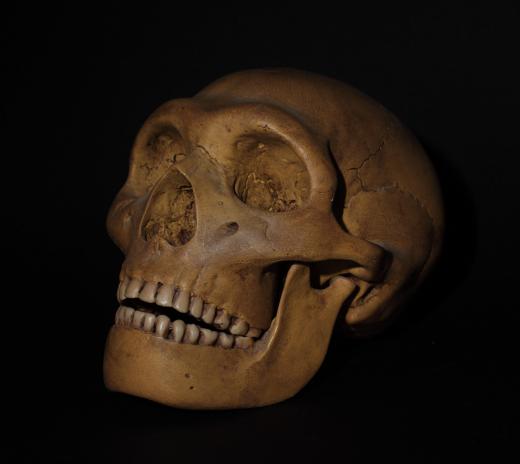What are Some Cryptids That Turned out to be Real?
 Michael Anissimov
Michael Anissimov
Cryptids are animals whose existence is implicated by witness reports or anecdotal evidence but for which there is an absence of hard evidence. The cryptids you hear about most are the Loch Ness Mosnter and Bigfoot, but it seems very likely that these animals are purely fictional and their skeletons will not be seen in museums. Other animals were once considered cryptids but are now known to exist. These include the giant squid, platypus, okapi, grizzly-polar bear hybrid, and the Komodo dragon. Similar cases include animals thought to be extinct which were then found to exist, such as the coelacanth (a fish), or animals which exist mythologically and similar fossils were subsequently found, such as the "Hobbit," Homo floresiensis, which is thought to have gone extinct only 13,000 years ago.
The giant squid is quite possibly the most famous cryptid that turned out to exist. Giant squids have been mentioned in natural history books since the time of the ancients, and both Aristotle and Pliny the Elder described the beast, which was said to have tentacles up to 9 m (30 ft) long. Tales of giant squid had long been shared among mariners, but no conclusive evidence was produced until 1861, when the French gunboat Alecton encountered a giant squid and tried to capture it, coming away with nothing but a tentacle. But the tentacle was enough for the cryptid to arouse the interest of the scientific community, which gave it the scientific designation Architeuthis, which means "great squid" in Latin. Throughout the late 1800s, many giant squids washed up on shores in Newfoundland and New Zealand, and only recently, in 2004, a giant squid was filmed in its natural habitat, miles beneath the surface of the ocean.

Another animal once considered among the cryptids whose existence has been confirmed is the okapi, an animal that has what appears to be the legs of a zebra, a body covered in reddish-brown hair, and a dark tongue like a giraffe. Living in the dense Ituri Rainforest of northeast Congo, Europeans had only heard of the okapi through stories of the natives, and came to call it the "African unicorn" for its elusiveness. In 1902, Sir Harry Johnston, an Englishman, happened to locate a skull and a patch of striped skin, which scientists used to classify the animal (correctly) as a relative of the giraffe. The first live specimen was not brought to Europe until 1918.

Another of the famous historic cryptids is the platypus. This Australian mammal is a monotreme, a type of mammals that were once abundant (in Australia) but today only includes the platypus and echidna. The platypus has been described as "duck-billed, beaver-tailed, and otter-footed." Instead of giving birth to live young like practically every other mammal, it lays eggs. It is also has some of the most excruciating venom of any animal in the world, injecting it into attackers with a spur on its hind leg. In 1789, English sailor Captain John Hunter sent a platypus pelt back to England as proof of the animal's existence. Thinking that the pelt was a hoax by taxidermists, scientists greatly doubted its veracity at first. But over the course of two years, encouraged by further eyewitness reports, scientists began to accept the animal as biological reality. They even cut up the first pelt to check it for signs of stitches.
AS FEATURED ON:
AS FEATURED ON:













Discussion Comments
I have to admit I'm a little skeptical about some of these famous cryptids. I think there would have to be a lot more "monsters" living in Loch Ness in order for that species to survive this long. I'm also surprised that no one has ever found a dead Bigfoot in all this time. Maybe other Bigfoots drag the bodies out of sight or something, but that would still leave some trace evidence.
I remember seeing footage on TV about an animal in Vietnam that looked like a deer with gills. I think it was an animal that they thought went extinct only a hundred years ago, so I don't know if that would make it a true cryptid or not. I think some super rare species of animals have found better places to hide and live than others. We'll probably find more confirmed cryptids once humans start developing those areas.
When I was a kid, I was totally fascinated by cryptids. I'd watch TV shows about Bigfoot and the Loch Ness Monster, and read every book I could find about cryptozoology. I was convinced that Bigfoot existed, but I wasn't so sure about Nessie. I also heard about a creature in Africa that looked like a brontosaurus but was the size of an elephant.
I think the most fascinating cryptid at that time was the coelacanth. I remember someone caught one in the 1930s and the scientists decided it was a living fossil.
Post your comments